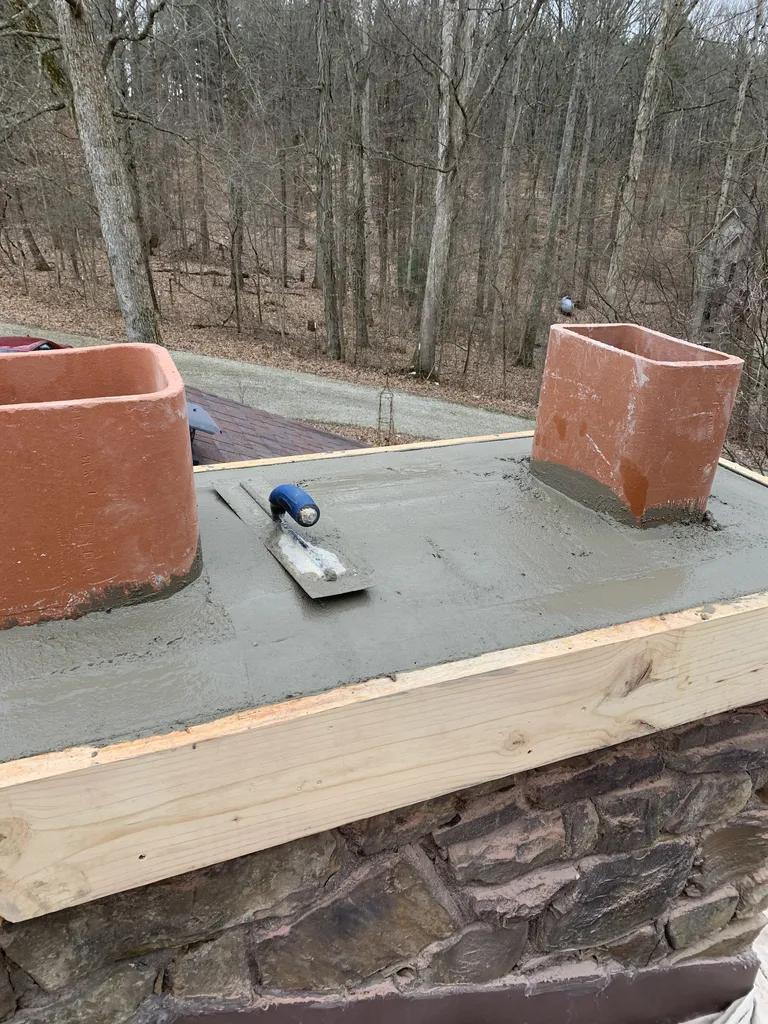Chimney leaks are a common issue that can cause significant damage to a home. One particularly troublesome problem is when a chimney leak goes unnoticed and water seeps into the walls of the house. In this article, we will explore the various causes of chimney leaking into walls, from chimney flashing problems to deteriorating mortar joints, and provide tips on how to prevent and address these issues. Understanding the root causes of chimney leaks can help homeowners protect their property and ensure the structural integrity of their homes.
Table of Contents
- Common
- Impact of Weather Exposure on Chimney Leak
- Signs of Chimney Leakage and Wall Damage
- Preventative Measures to Avoid Chimney Leaks into Walls
- Q&A
- The Way Forward

Common
One common cause of a chimney leaking into a wall is a damaged chimney crown. The chimney crown is the concrete slab that sits on top of the chimney. If it is cracked or damaged, water can seep through and find its way into the walls of your home. It is important to regularly inspect and maintain your chimney crown to prevent leaks.
<p>Another possible cause of chimney leaks is a damaged flashing. The flashing is the metal strips that seal the connection between the chimney and the roof. If the flashing is loose or damaged, water can easily enter the walls through this opening. Properly maintaining the flashing by making sure it is securely in place can help prevent leaks into the wall.</p>
Impact of Weather Exposure on Chimney Leak
Weather exposure can have a significant impact on chimney leaks, leading to water infiltration into the walls of a home. One common cause of chimney leaks is the deterioration of the chimney cap due to exposure to harsh weather conditions such as rain, snow, and ice. A damaged chimney cap can allow water to seep into the chimney and eventually find its way into the walls of the house.
Another factor that can contribute to chimney leaks is the freeze-thaw cycle. When water enters the chimney and freezes during cold weather, it expands and creates cracks in the chimney structure. As the ice thaws, these cracks allow water to penetrate the chimney walls, leading to leaks. Proper maintenance and regular inspections can help prevent weather-related chimney leaks and protect the integrity of the chimney and the walls of the home.

Signs of Chimney Leakage and Wall Damage
One of the most common causes of chimney leaking into the wall is damaged flashing. The flashing is the metal sheet that seals the connection between the chimney and the roof. If the flashing becomes rusted or loose, water can seep through and into the wall, causing damage over time. Another common cause is cracked chimney crown, which is the masonry top of the chimney. A cracked crown can allow water to enter the chimney structure and eventually leak into the wall.
Additionally, chimney cap damage can also lead to water leakage into the wall. The chimney cap is a metal or concrete lid that sits on top of the chimney opening to prevent water, debris, and animals from entering. If the cap is cracked or missing, water can easily enter the chimney and wall. Finally, deteriorated mortar joints can also contribute to chimney leaking. The mortar between the bricks or stones of the chimney can degrade over time, allowing water to seep through and cause damage to the chimney and wall.

Preventative Measures to Avoid Chimney Leaks into Walls
When it comes to preventing chimney leaks into walls, there are several key measures that homeowners can take to protect their property and avoid costly repairs. One common cause of chimney leaks is damage to the chimney crown, which can allow water to seep into the walls and cause deterioration over time. To prevent this issue, it is important to regularly inspect the chimney crown and make any necessary repairs or replacements.
Another potential cause of chimney leaks into walls is damaged flashing, which is the metal seal that surrounds the base of the chimney where it meets the roof. If the flashing becomes corroded or loose, water can easily enter the walls and cause damage. To avoid this problem, homeowners should inspect the flashing regularly and repair or replace it as needed. Additionally, keeping gutters clean and free of debris can help prevent water from overflowing and seeping into the walls around the chimney.
Q&A
Q: What are the common causes of chimney leaking into the wall?
A: The common causes of chimney leaking into the wall include damaged flashing, cracks in the chimney crown, deteriorated mortar joints, and faulty chimney caps.
Q: How do damaged flashing contribute to chimney leaking?
A: Damaged flashing can allow water to seep into the wall, leading to leaks. Flashing is designed to provide a watertight seal between the chimney and the roof, so any breaks or missing sections can create openings for water to enter.
Q: What role does the chimney crown play in chimney leaks?
A: The chimney crown is a protective covering at the top of the chimney that helps to prevent water from entering the chimney structure. Cracks in the chimney crown can allow water to penetrate the chimney and leak into the wall.
Q: Why are deteriorated mortar joints a common cause of chimney leaking?
A: Deteriorated mortar joints can allow water to infiltrate the chimney structure, leading to leaks. Over time, the mortar between the bricks can degrade, creating spaces for water to seep in.
Q: How can a faulty chimney cap contribute to chimney leaks?
A: A faulty chimney cap can allow water and debris to enter the chimney, which can lead to leaks. The chimney cap is designed to prevent water from entering the chimney structure, so any damage or missing sections can result in leaks.
Q: What steps should be taken to address chimney leaks into the wall?
A: To address chimney leaks into the wall, it is important to identify and repair the underlying cause of the leak. This may involve repairing damaged flashing, fixing cracks in the chimney crown, re-pointing deteriorated mortar joints, or replacing a faulty chimney cap. Regular maintenance and inspections can help prevent chimney leaks in the future.
The Way Forward
In conclusion, it is important to address the causes of chimney leaking into walls as soon as possible to prevent further damage to your home. By identifying and repairing issues such as damaged flashing, faulty chimney caps, and deteriorating masonry, you can ensure that your chimney functions properly and keeps water out of your walls. Regular maintenance and inspections by a professional chimney technician can help prevent chimney leaks and protect your home from costly repairs. Remember, taking proactive measures now can save you time and money in the long run. Thank you for reading and stay informed about proper chimney maintenance to keep your home safe and secure.


